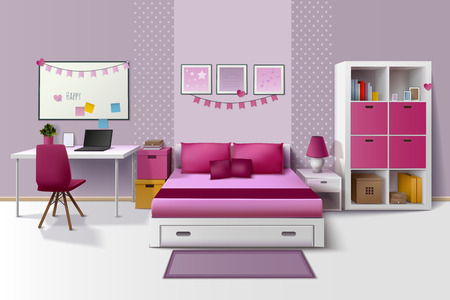Embracing Open-Plan Living in the UK
Open-plan living has steadily woven itself into the fabric of modern British homes, reflecting a broader shift towards more connected and flexible lifestyles. Traditionally, UK houses have been characterised by distinct rooms with clear separations between living, dining, and kitchen spaces. However, as urban living evolves and space becomes an ever-more valuable commodity, many households are choosing to break down these barriers. The appeal lies not just in aesthetics but in practicality—open layouts invite natural light, create a sense of spaciousness even in compact city flats, and foster easier interaction among family members and guests. More Britons now see their homes as dynamic spaces that adapt to work, relaxation, and entertaining needs. This trend echoes a collective move towards informality and multifunctional living, making open-plan designs a contemporary staple across the UK’s varied housing landscape.
2. Design Principles for Seamless Integration
When creating an open-plan living environment in a UK home, blending the kitchen and living room spaces calls for thoughtful design strategies that balance both functionality and style. Modern British households are increasingly embracing this approach to accommodate social interaction, family time, and efficient use of space, especially in urban settings where square footage can be at a premium.
Layout Strategies: Optimising Flow and Connectivity
The first step is to consider the overall layout. Open-plan designs thrive on flexibility, but they also require clear planning to avoid clutter and ensure comfort. The classic L-shaped or U-shaped arrangement works well in many British homes, providing a natural separation while maintaining connection. An island or breakfast bar can act as a gentle buffer between the kitchen’s activity zone and the living area’s relaxation hub.
Zoning: Defining Functional Areas
Zoning is crucial for establishing distinct yet harmonious areas within a single large room. This can be achieved through:
| Element | Practical Use | British Example |
|---|---|---|
| Furniture Placement | Sofas or shelving units subtly mark out spaces without needing walls. | A corner sofa facing away from the kitchen creates a lounge nook in a Victorian terrace extension. |
| Flooring Choices | Using different materials (e.g., wood for living area, tiles for kitchen) visually separates zones. | Engineered oak boards transitioning to patterned tiles, popular in London flats. |
| Lighting Schemes | Pendant lights over dining tables and softer lamps in lounges delineate areas. | Industrial pendants over a Belfast sink paired with dimmable wall lights near the telly. |
Visual Flow: Keeping It Cohesive
A seamless look relies on maintaining visual continuity throughout the space. Stick to a cohesive colour palette—think soft greys, muted greens, or warm neutrals favoured in contemporary UK interiors. Built-in storage solutions like alcove cupboards or under-stairs cabinetry help keep clutter at bay, ensuring surfaces stay tidy and views remain uninterrupted. Open shelving offers display opportunities for ceramics or cookbooks, adding personality without overwhelming the eye.
By blending clever layout choices with subtle zoning techniques and a unified visual language, you can create an open-plan space that feels both spacious and comfortably British—a setting designed for everything from Sunday roasts to everyday life admin.

3. Maximising Natural Light and Space
In the context of modern UK living, where homes can often feel snug and space is at a premium, making the most of natural light and clever spatial planning is essential. Open-plan layouts offer a wonderful opportunity to brighten up your living areas, creating a sense of airiness and warmth that’s especially valuable during those long British winters. Large windows, bi-fold doors, and even strategically placed skylights can flood your integrated living and kitchen spaces with sunlight, making the entire area feel more expansive and inviting.
To enhance this effect, it’s worth opting for lighter wall colours—think soft whites or gentle greys—that bounce daylight around the room. Glossy finishes on kitchen cabinetry or well-placed mirrors can further amplify available light. When planning furniture arrangement in an open-plan setup, choose multi-functional pieces that don’t overcrowd the space; a slimline sofa or a compact dining set keeps things feeling open without sacrificing comfort.
It’s also important to keep window dressings simple—lightweight blinds or sheer curtains allow maximum sunlight while still providing privacy. For those who love a bit of greenery, houseplants near windows thrive in natural light and bring life to the space without cluttering it up. By focusing on both natural lighting and smart design choices, you can transform even the cosiest UK home into a welcoming sanctuary that feels both spacious and effortlessly stylish.
4. Functional Storage and Organisation
One of the key challenges in open-plan living is maintaining a clutter-free environment that feels both welcoming and practical. In UK homes, where space can be at a premium, clever storage solutions are essential to make the most of every square foot. Here are some tried-and-tested tips for efficient organisation in combined living room and kitchen spaces, with a focus on real British lifestyles.
Built-in Cabinets: Seamless Storage
Built-in cabinets offer streamlined storage without eating into valuable floor area. Consider floor-to-ceiling cupboards or shelving units that blend with your décor, whether you prefer modern shaker-style doors or classic painted wood. These are ideal for tucking away everything from cookbooks to board games, keeping surfaces tidy and essentials within easy reach.
Under-Stairs Storage: Hidden Gems
If your open-plan area incorporates or is adjacent to a staircase, don’t overlook the potential beneath it. Under-stairs storage can be customised for pull-out drawers, shoe racks, or even a compact pantry—perfect for storing bulky kitchen appliances or cleaning supplies. This makes use of otherwise wasted space while keeping your main areas neat.
Multipurpose Furniture: Style Meets Function
Investing in furniture that doubles up for storage is a smart move for open-plan living. Think ottomans with hidden compartments, extendable dining tables with built-in drawers, or sofas with under-seat storage. Not only do these pieces help keep clutter at bay, but they also add flexibility to how you use your space—important for families and those who love entertaining.
Quick Guide: Popular UK Storage Solutions
| Solution | Best For | UK Example |
|---|---|---|
| Built-in Cabinets | Maximising vertical space | Bespoke alcove units in Victorian terraces |
| Under-Stairs Storage | Utilising awkward nooks | Shoe racks & pantry shelves beneath stairs |
| Multipurpose Furniture | Flexible family living | Sofa beds, lift-top coffee tables from John Lewis or IKEA UK |
| Wall-mounted Shelves | Open display & easy access | Pine shelving above radiators or worktops |
| Baskets & Bins | Quick tidy-ups & sorting post/parcels | Wicker baskets in hallway cubbies (The White Company) |
Tidy Home, Tidy Mind: A British Perspective
The British approach to home organisation often blends practicality with a touch of personality—a favourite mug collection neatly displayed, or family photos arranged above the fireplace. By investing in smart storage tailored to your open-plan layout, you’ll not only reduce clutter but also create an inviting space that truly feels like home.
5. Creating Cosy British Ambience
Blending the signature warmth of a British home with the sleekness of open-plan living is all about careful curation. While open layouts offer light and space, you can infuse traditional comfort through thoughtfully chosen details. Start with soft furnishings: plush velvet or tweed cushions, chunky knit throws, and classic patterned rugs define those inviting nooks that make British homes so beloved. Layering textures—think wool, linen, and natural fibres—adds instant cosiness without sacrificing a modern aesthetic.
To truly anchor your space in British character, consider iconic local design features. A bay window fitted with a cushioned seat becomes a charming reading corner or a spot for casual chats over tea. If youre lucky enough to have one, a wood-burning stove not only serves as a visual centrepiece but also radiates warmth throughout your open-plan area on chilly evenings—a nod to countryside retreats even in the city.
Balance is key. Pair heritage pieces like an antique sideboard or Windsor chairs with streamlined contemporary sofas or industrial-style lighting. This mix keeps the vibe fresh yet familiar. Use shelving to display treasured books or ceramics, and don’t underestimate the power of well-chosen lighting: dimmable lamps and warm bulbs create that classic ‘cosy’ glow as dusk falls outside your window.
Ultimately, integrating these touches into your open-plan layout allows you to enjoy the best of both worlds—modern functionality meets enduring British charm.
6. Bringing People Together
One of the most cherished benefits of open-plan living in the UK is its remarkable ability to bring people together. By removing the traditional barriers between the kitchen and living room, these layouts foster a seamless environment where family members and guests can interact more naturally. Whether its sharing a pot of tea while someone cooks, helping children with homework at the dining table, or enjoying lively conversation during weekend brunches, open-plan spaces create a vibrant hub for daily life. The heart of the British home shifts from isolated rooms to one cohesive space, making it easier to keep an eye on little ones or join in with friends without missing a beat. This sense of connectedness not only encourages spontaneous get-togethers but also supports deeper family bonds and shared experiences. In today’s fast-paced world, having a home that invites laughter, conversation, and togetherness is truly invaluable—turning everyday moments into lasting memories.


